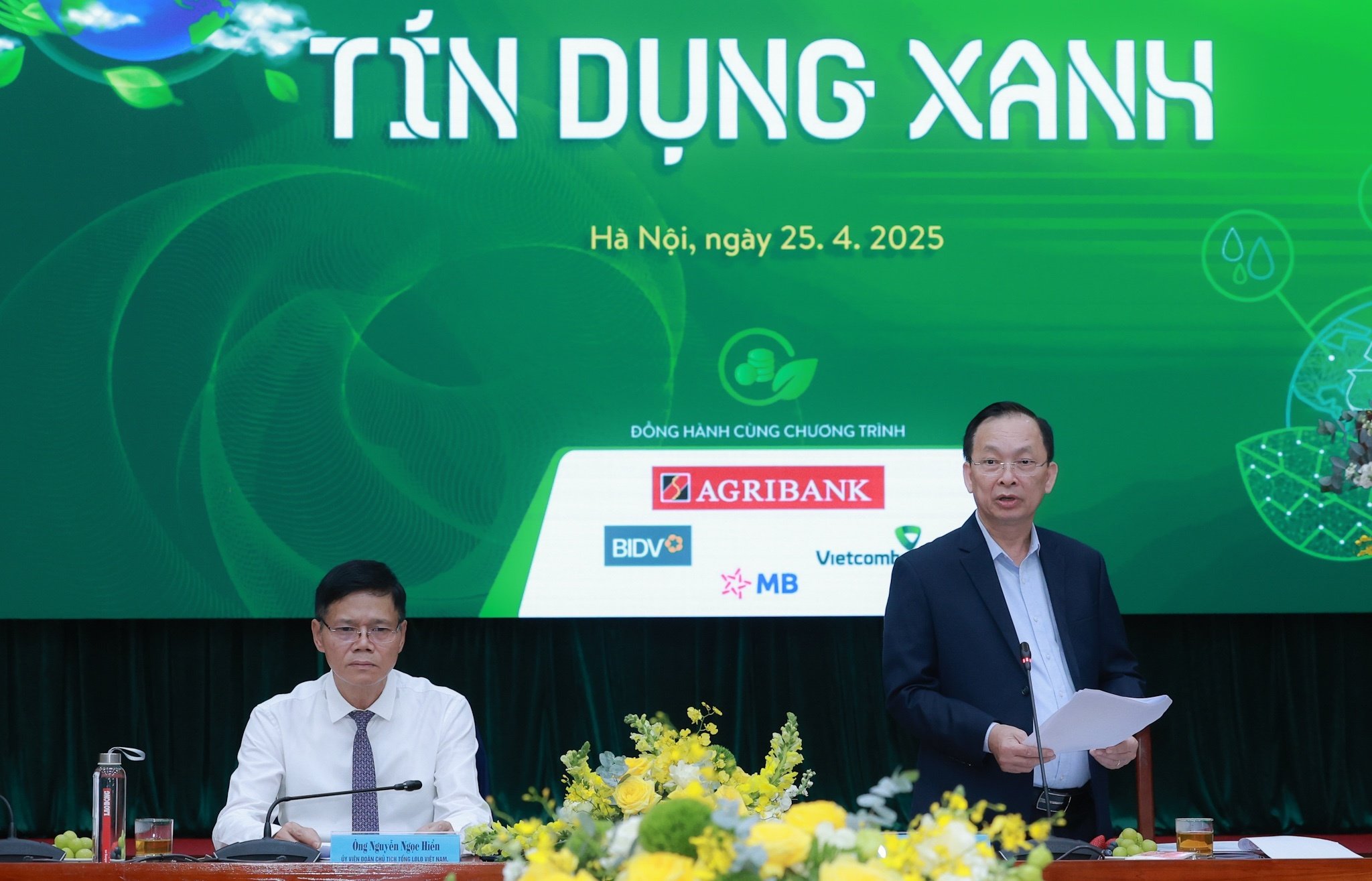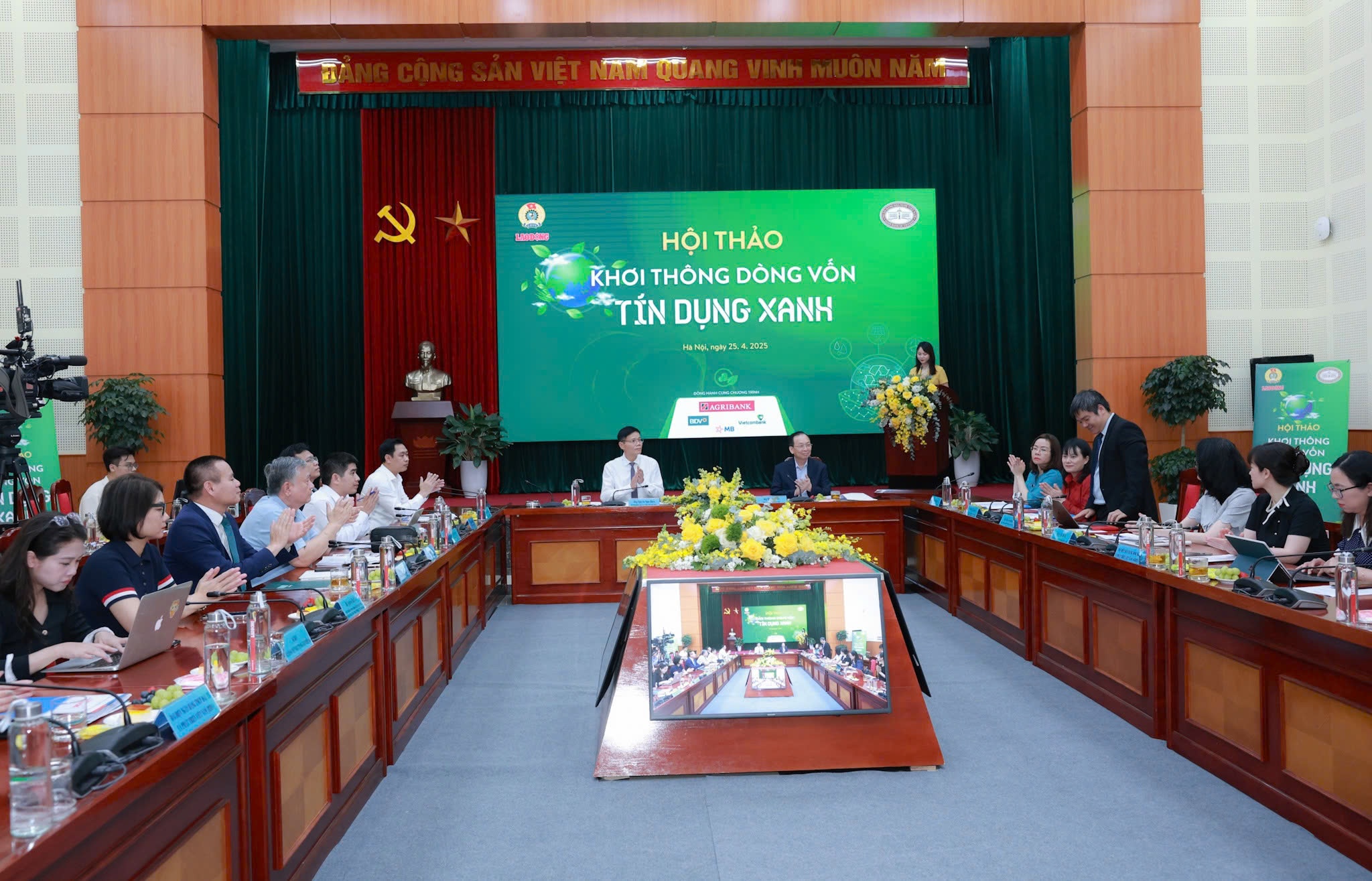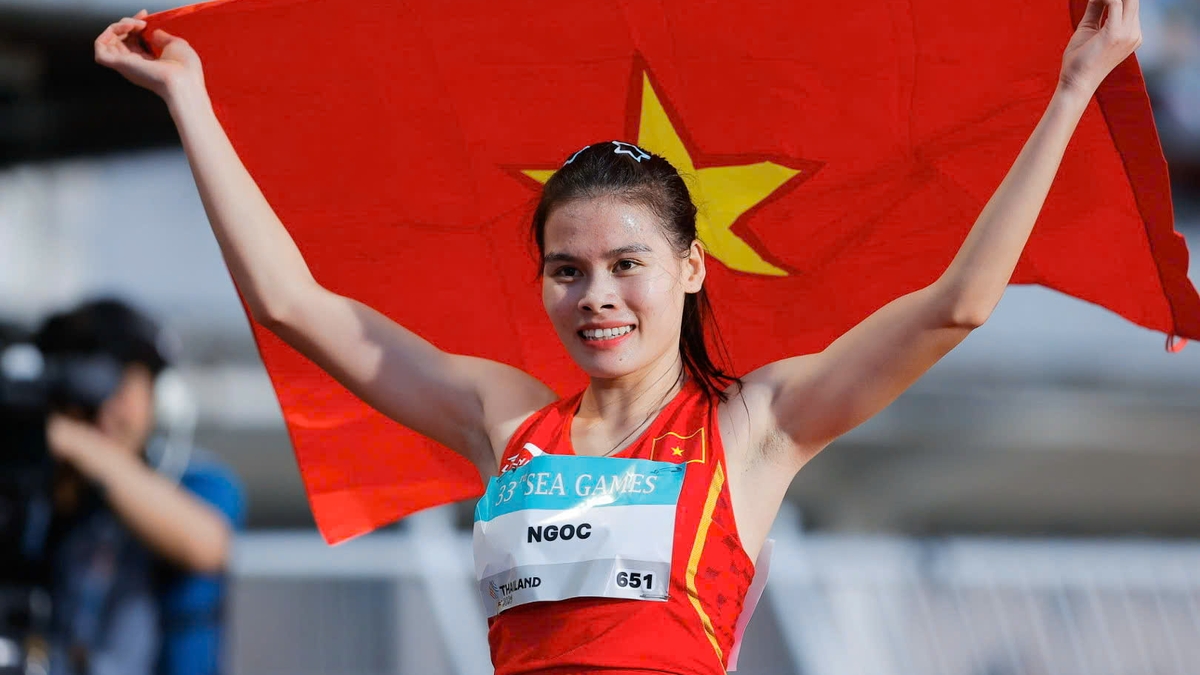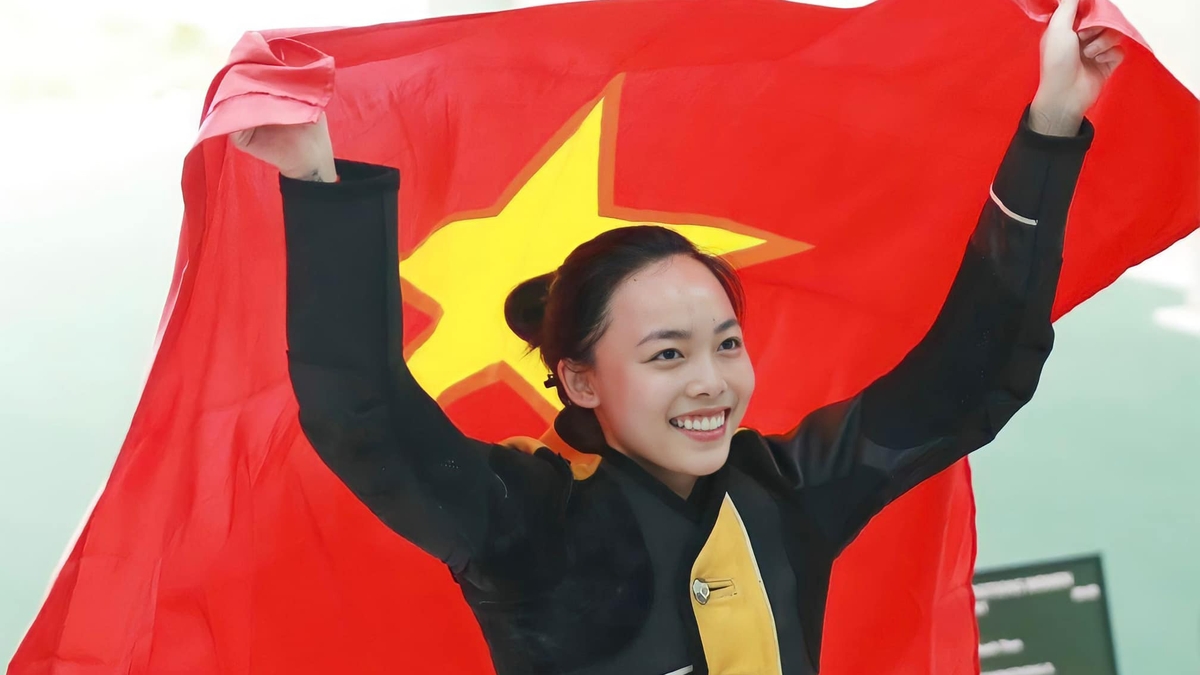 |
| Deputy Governor of the State Bank of Vietnam, Dao Minh Tu, delivered a speech at the seminar. |
According to the National Strategy on Green Growth for the period 2021-2030, with a vision to 2050 (Decision No. 1658/QD-TTg), the development of unified policies and criteria for green credit is an urgent requirement to develop a sustainable financial market, promote businesses to adopt ESG practices, and effectively mobilize resources from the entire society. The workshop was organized to create a space for connection between managers, experts, credit institutions, and businesses, and to provide a forum for frank exchange, sharing practical initiatives, and proposing solutions to gradually improve mechanisms and policies to promote the more effective development of green credit.
In his opening remarks, Mr. Nguyen Ngoc Hien, Member of the Presidium of the Vietnam General Confederation of Labor and Editor-in-Chief of the Labor Newspaper, stated that green credit plays a crucial role in the strategy for sustainable financial development. This is not only a source of capital to promote environmentally friendly projects, but also a catalyst to help businesses innovate their production models and adapt to the increasingly evident trend of green transformation.
Sharing this view, Deputy Governor Dao Minh Tu affirmed that green credit and ESG implementation are inevitable trends for sustainable development, and are one of the important resources for achieving the national green growth target. They are solutions that help credit institutions reorient their business operations towards sustainability, approaching international standards, thereby affirming their position, enhancing competitiveness, and expanding opportunities for cooperation and business. At the same time, for businesses, green credit is a resource that supports them in improving technology and transitioning to green production.
Given this role, the period for green credit in Vietnam has many favorable conditions and opportunities for development, thanks to very clear guidelines and regulations. Based on these policy frameworks, the banking sector has actively and decisively implemented solutions to promote green credit activities and has achieved many positive results in terms of awareness, the number of credit institutions participating in financing green sectors, and the scale and growth rate of green credit outstanding.
“From only 15 credit institutions participating in 2017, there are now 50 units generating outstanding loans, with the average growth rate of green credit outstanding loans in the 2017-2024 period reaching over 22% per year, higher than the overall growth rate of credit outstanding loans for the economy ,” Deputy Governor Dao Minh Tu informed.
However, in practice, the Deputy Governor shared that banks and businesses face numerous difficulties in implementing this content, such as the lack of a national green classification list, general regulations on ESG for businesses to practice and meet increasingly stringent sustainable development requirements; limited risk assessment tools, long payback periods, unclear financial effectiveness; higher demands on governance and the quality of banking human resources in the environmental, social, and climate fields to identify, assess, manage, and monitor credit granting as well as advise and support customers in meeting new international emission standards… These “bottlenecks” require a new, more comprehensive, flexible, and synchronized approach between policy, market, and legal framework.
 |
| Overview of the Conference |
Furthermore, according to some experts, the awareness of businesses and investors regarding the benefits and importance of the green financial market is uneven, leading to low customer interest in green financial deposit and credit products, and a hesitant attitude towards using new banking products/services. Investing in green projects requires large capital and specialized expertise in assessing environmental and technical factors; therefore, credit institutions will incur additional costs in building management systems that align with the goals of green growth and green transformation of the economy, and in enhancing the capacity of bank staff in green banking and sustainable finance.
Based on the aforementioned practical requirements, Ms. Ha Thu Giang, Director of the Department of Credit for Economic Sectors (State Bank of Vietnam), believes that expanding, unlocking, and effectively utilizing green credit capital from the banking system requires coordination and cooperation from ministries, sectors, and functional agencies in perfecting the legal framework and support mechanisms, creating incentives to mobilize all resources from economic sectors.
Furthermore, it is necessary to comprehensively improve investment mechanisms and policies to create a favorable investment environment; develop a roadmap for implementing policies and mechanisms to support green industries in each sector/field in a coordinated manner to attract and effectively utilize green credit capital. Develop and implement solutions to support credit institutions in accessing and mobilizing financial resources from financial institutions, funds, and international private investors, enabling them to provide long-term loans with preferential interest rates to green industries/fields. In particular, the national green classification list should be issued soon.
Sharing this view, Mr. Lai Van Manh, Head of the Economic, Resource and Environmental Affairs Department, Institute of Agricultural and Environmental Policy Strategy ( Ministry of Agriculture and Environment ), believes that building a green classification system based on international standards helps clearly define the criteria and important factors in assessing the sustainability of projects. Investors and international organizations are increasingly interested in green and sustainable projects. By applying international standards in project classification, Vietnam will create transparency and trust for the international community. This helps attract international investment and funding, contributing to promoting domestic economic and technological development.
Source: https://thoibaonganhang.vn/mo-rong-khoi-thong-and-su-dung-hieu-qua-von-tin-dung-xanh-163366.html





![[Photo] General Secretary To Lam visits the exhibition space showcasing books, photo exhibitions, and achievements of digital transformation in journalism.](/_next/image?url=https%3A%2F%2Fvphoto.vietnam.vn%2Fthumb%2F1200x675%2Fvietnam%2Fresource%2FIMAGE%2F2025%2F12%2F19%2F1766110879215_1766110240024-jpg.webp&w=3840&q=75)
![[Photo] Enchanting ancient rose garden on the mountainside in Nghe An](/_next/image?url=https%3A%2F%2Fvphoto.vietnam.vn%2Fthumb%2F1200x675%2Fvietnam%2Fresource%2FIMAGE%2F2025%2F12%2F19%2F1766109900916_vuon-hong-chin-do-thu-hut-du-khach-toi-check-in-o-ha-noi-3-20162778-1671624890024-1671624890104198100259.jpeg&w=3840&q=75)































































































Comment (0)